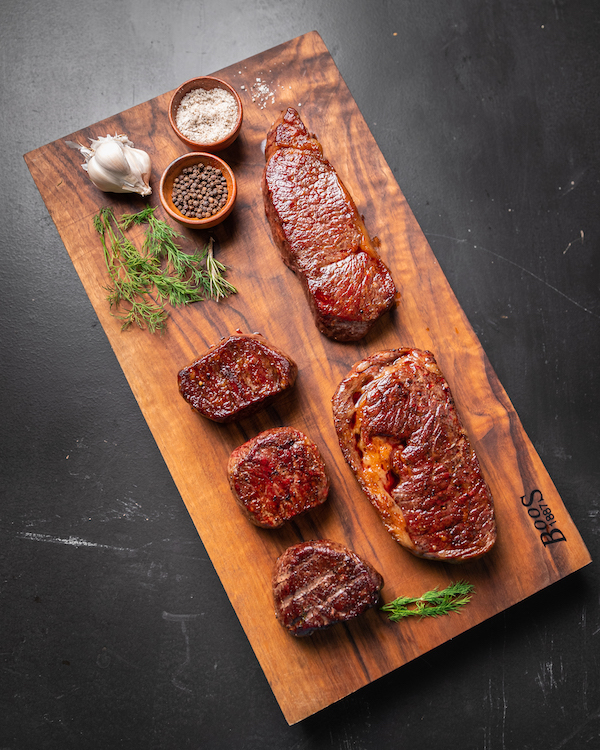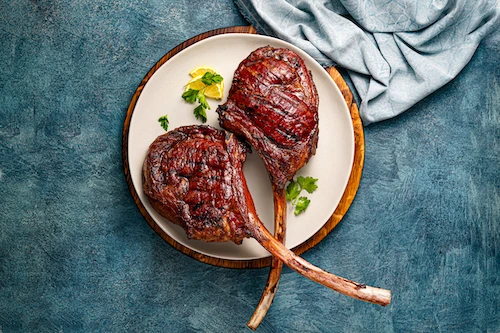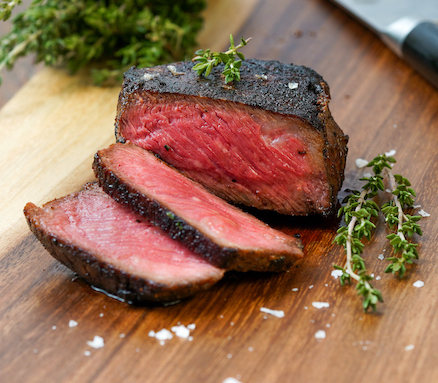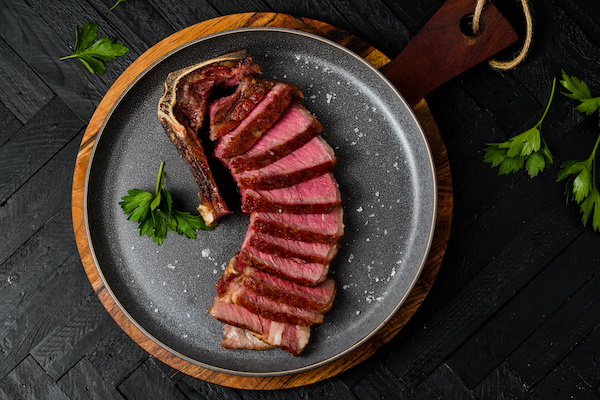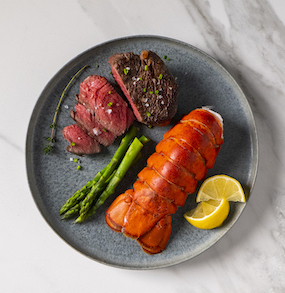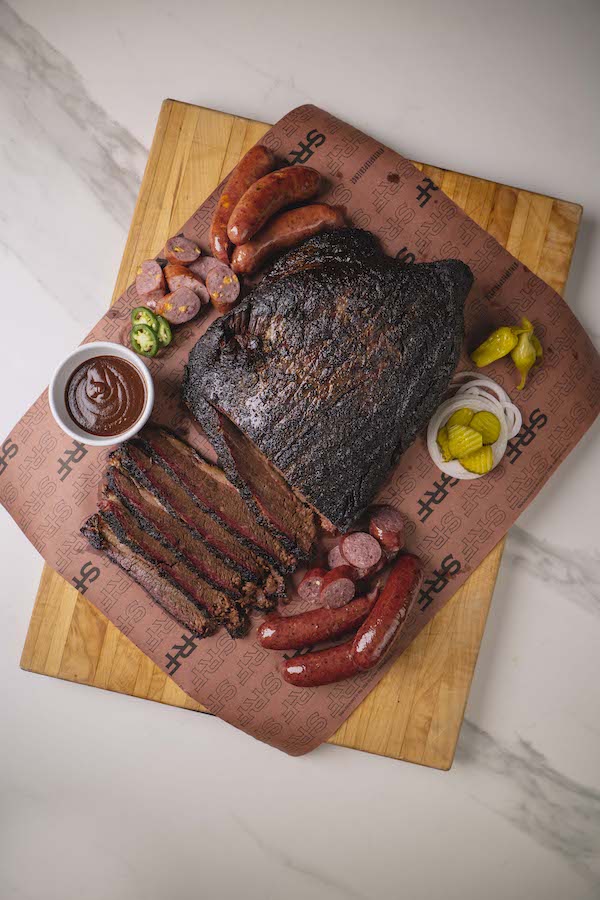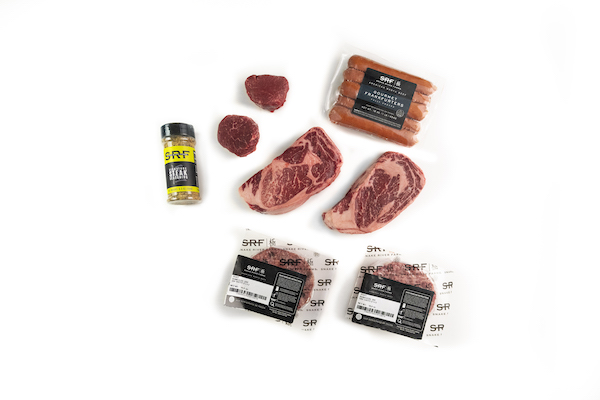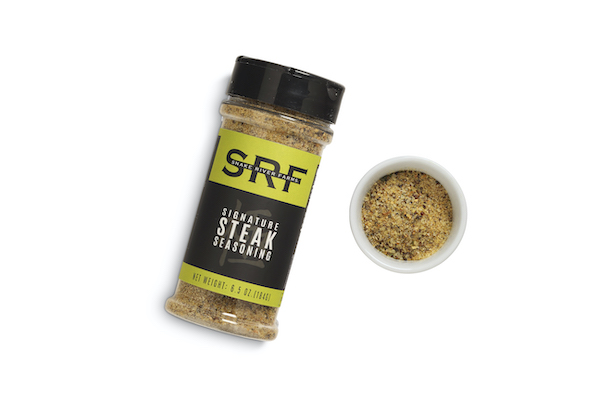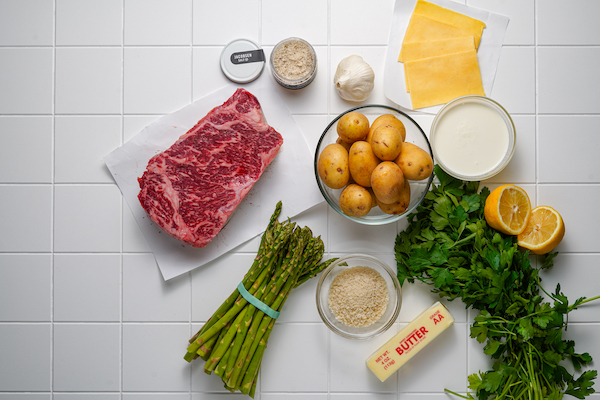The Tri-Tip - A Santa Maria Original
History Behind the Santa Maria Original: From Write-Off to Mainstay

Until about the mid-1950s, butchers generally ground up this boomerang-shaped cut from the bottom portion of the sirloin region and sold it as hamburger meat. Legend has it that Bob Schutz, owner of Southern California’s Santa Maria Market, changed all that when a surplus of this lean, boneless cut showed up. Rather than grind it all, he prepared it as a steak — and history was made. Its robust flavor and economical price vaulted the tri-tip to the status of a Central California mainstay, and it’s been a staple on regional menus ever since.
What is a Santa Maria Tri-Tip?
A Santa Maria tri-tip is cut from the bottom of the sirloin, which is a portion of meat located at the top of the cow's back. It is known for its tenderness and juiciness. When prepared with the right cooking method, the Santa Maria tri-tip features a smoky, salty, and flavorful bark.
The generous size and serious value of a tri-tip often leads to the misnomer of “poor man’s brisket.” But briskets are cut from the chuck region at the front of the cow, not the sirloin closer to the tail. Like its close cousin, top sirloin, the American Wagyu Tri-Tip is more akin to steak, no matter how you slice it.
Some restaurants will label it Newport Steak when they slice it into individual portions, and the French use the elegant name aiguillette baronne. You may also see it called a California cut, a bottom sirloin butt or a Santa Maria steak.
Learn about other cuts of beef that tend to be lesser known or underrated.
How to Cook a Tri-Tip Like a Champ
There are a number of ways to cook a Santa Maria Tri-Tip, including the traditional methods as well as smoking, grilling, and even performing a reverse sear.
Tri-Tip on a Santa Maria Grill
The traditional Santa Maria method of cooking a tri-tip involves red oak wood chips and a special grill. A Santa Maria grill has a large open platform for the charcoal and a grill that can be raised or lowered to control the cooking heat. This style grew out of an older tradition of mid-19th-century ranchers roasting meat over open pits for their herders. The authentic Santa Maria meal is a grilled tri-tip is paired with pinquito beans, salsa and buttered bread, just as those ranchers did. The Santa Maria Chamber of Commerce had the recipe copyrighted in 1978 to preserve its authenticity.
The authentic Santa Maria meal is a grilled tri-tip and is paired with the pinquito beans, salsa and buttered bread, just as those ranchers did. The Santa Maria Chamber of Commerce had the recipe copyrighted in 1978 to preserve its authenticity.
Santa Maria Tri-Tip on a Smoker
Barbecue champion Steph Franklin says tri-tip is the No. 1 protein requested from his Southern California catering company, Simply Marvelous BBQ. That lends credence to his claim about preparing it: “I cook it the best of anyone.” Shake up your routine with SRF BBQ Brisket Rub that Franklin developed on your tri-tip. Cayenne, cumin and paprika deliver complex flavor and a little kick.
He prefers the high heat (300 to 350°F) of a smoker to get the job done in under an hour, pulling it out when it reaches an internal temp of 135°F.
“It caramelizes in a hot and fast environment, even though you’re not grilling,” he says. “It plumps up nicely and develops depth of flavor.”

How to smoke a Santa Maria tri-tip:
- Bring your smoker up to a temperature of 300°F.
- As the smoker is coming up to temp, add your desired wood chips. We recommend either oak, pecan, or hickory.
- Once the smoke appears greyish blue in color, it's time put the seasoned Santa Maria tri-tip on the smoke, fat side down.
- Insert your remote meat the thermometer and close the smoker.
- Once the Santa Maria tri-tip reach an internal temperature of 135°F (approx. 45 to 60 minutes). pull it from the smoker.
- Remove the probe and wrap the tri-tip in foil or butcher paper and set aside.
- Bring your grill or smoker up to a high temperature, around 450°F.
- Quickly sear both sides of the Santa Maria Trip-Tip (3-4 minutes each side).
- Pull the tri-tip and allow to rest for at least 15 minutes.
- Slice and serve!
If you're not a smoker fan, try these other Santa Maria tri-tip cooking methods:
- Two-Zone Grill Method - Flex your gas or charcoal skills with our tips for how to grill a tri-tip to juicy perfection. Take particular care to slice against the grain, which can be tricky with this triangular beauty.
- Reverse Sear Method – A thick cut of American Wagyu beef like the tri-tip benefits from a slower rise to the desired internal temp, then a finishing sear to seal in the flavor. You can achieve this indoors, with an oven and cast iron pan, or outdoors on a two-zone grill setup.

Our Favorite Tri-Tip Recipes
Tri-tip steak is great for sandwiches, tacos, salads, or laying out sliced on serving trays for parties, dinners, and special events.
Here are some tri-tip recipes we recommend from Snake River Farms:
Where to Buy Tri-Tip
When it comes to cooking a Santa Maria tri-tip, the hardest part of the process is often finding where to buy it!
Tri-tip is a lesser known cut of beef, especially outside of California where it can be hard to find even from the large grocery store chains.
Fortunately, you can get incredible quality tri-tip delivered straight to your door directly from Snake River Farms.
American Wagyu Tri-Tip From Snake River Farms
The next time you smoke or grill a Santa Maria tri-tip, take it to the next level with American Wagyu Beef from Snake River Farms. The incredible marbling and heightened taste profile that comes from American Wagyu cattle will deliver a newfound richness to every bite or your next grilled or smoked tri-tip.
Once you try a Wagyu tri-tip from Snake River Farms, it's almost impossible to go back.


